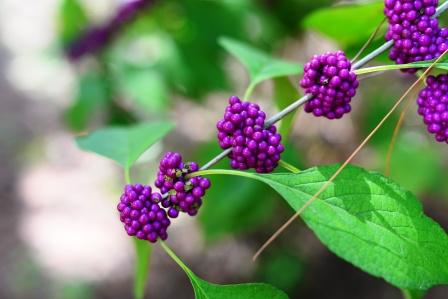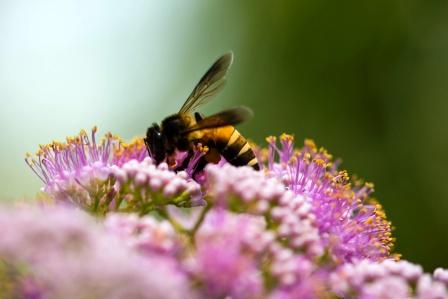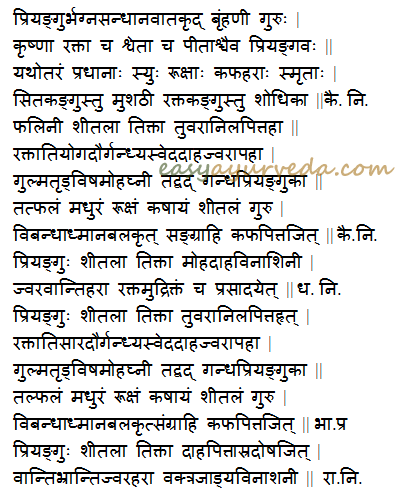Priyangu Callicarpa macrophylla: Uses, Research, Remedies
Priyangu – Callicarpa macrophylla is an Ayurveda coolant herb used for the treatment of headache, diarrhea mixed with blood (Ulcerative colitis), general debility, fever, pain in the joints, skin diseases etc.
Latin name- Callicarpa Macrophylla Vahl.
Family- Verbenaceae (nirgundi kula)

Table of Contents
Vernacular names
Names in different languages:
Hindi name : Phalini, Daya
English name : Beutyberry
Bengali name : Matara, Mathara
Gujarati name : Priyangu
Kannada name : Priyangu
Malayalam name : Gawhla, Nalal, Jativruksha
Marathi name : Garhala
Punjabi name : Priyang, Sumali
Tamil name : Ittauduga, Vettilai pattai, Seembakulthu
Telugu name : Kodauduga
Sanskrit synonyms
Gandhaphali- The fruit has a strong odor
Phalini- The plant bears many fruits
Asthibandhana- Binds the bones together
Gochandana, Shyama, Pitatandula, Karamba, Priya, Durjara, Kanta, Priyahva, Vanita, Lata, Shyama, Godantini,
Kanguni, Kangu,
Priyavalli, Vrutta, Govandani, Karambha, Varnabhedani, Mahilahvaya, Vishvak Senangana Priya, Bhangura, Mangalya, Shreyasi
Morphology
Morphology of Callicarpa macrophylla:
Priyangu is a perennial shrub growing up to 2m height found in North eastern parts of India and at 3000 ft in Himalayan region. Branches have a hairy cotton structure. The leaves are 18 to 30 cm long ovate as lanceolate, smooth from upper surface and hairy from ventral surface. The flowers are small, pink appears in fluorescence, some are purple or pinkish purple in color. The fruits are fleshy white divided into 4 compartments, each having a single seed, ripe fruits look spongy.
Properties, part used, dosage
Callicarpa macrophylla medicinal properties:
Rasa (Taste) – Tikta (Bitter), Kashaya (Astringent), Madhura (Sweet)
Guna (Qualities) – Laghu (Light for digestion), Ruksha (Dry in nature)
Vipaka – Katu (Undergoes Pungent taste after digestion)
Veerya (Potency) – Sheeta (Cold)
Karma (Actions) – Tridosha shamaka (Balances down all the three doshas)
Pharmacological actions – Anti inflammatory

Part used- Flower, Bark, Root
Dosage-
Powder- 3 to 5 g
Decoction- 30 to 40 ml
Chemical constituents
Callicarpa macrophylla Chemical constituents:
Oil from root is aromatic and stomachic. Calliterpenone (3-0X0-13β – Karane- 16α , A –diol) and its acetate are seen in seeds, leaves and aerial parts. Crategolic acid, 2α – hydroxyursolic acid, ursolic acid, β-Sitosterol, β-D-glucoside, apigenin, luteolin, their 7-0-glucuronides 3, 3’-7 trime thoxy-4’, 5- dihydroxy-flarone (CNF-1) L(t)- α- amino- β-(P-methoxyphenyl), Propronic acid, C22 –C24 fatty acids, ethyl ester of C23 fatty acid are obtained from leaves. A new diterpenoid- Isopropylidenocalliterpenone is isolated from essential oil of leaves along with calliterpenone and its monoacetate and characterized as 16α, 17-Isopropylidene-3-oxo-phylloclade.
Uses
Medicinal Uses of Priyangu:
- The berries are highly astringent but are made into wine and jelly.
- The paste of the bark is applied over the forehead to treat headache.
- The powder of the bark of Priyangu is used for rubbing the gums to treat gingivitis and used in face packs to improve the complexion of the face.
- The powder of the bark is used as dusting powder to control the bleeding from wounds.
- The decoction of the bark of Callicarpa macrophylla is given in a dose of 30-40 ml to stop internal bleeding in cases of peptic ulcer, internal piles.
- The cold infusion of the bark or root of Callicarpa macrophylla is given in a dose of 50 ml to treat fever and burning sensation of the body.
- The dried powder of Priyangu is given with milk to improve the strength of the body.
- The paste of the bark is applied externally to treat skin diseases.
- The cold infusion of the bark or root is given in a dose of 40 ml which acts as blood purifier.
- Oil processed with the leaves or bark of Priyangu is applied over the joints, causing swelling and pain
THERAPEUTIC USES:
Shitada : Priyangu + Musta+ Triphala are made into paste applied over gums. – Cha. Chi-4/70
Parinama shula: Vomiting is induced with leaf decoction of Priyangu. – Cha. Su-26
Jvara: Priyangu is best for Jvara, which contains Madhur rasa, Shita virya –Dha. Ni/Cha. Su-26
If bleeding does not stop, methods to stop it should be adopted, orifice of wound should be smeared with powder of Priyangu, Yasti, Masha etc. –A. H. Su 27/48.
Decreases Pitta. It comes under the group Which mitigates pitta. –A. H. Su 15/6
It cures chronic diarrhea, heals fractures, good for pitta, healing ulcers –A. H. Su- 15/37
It helps in unification of broken parts, fractures of bones, makes the body stout, and hard to digest. –A. h. Su- 6/12
Priyangu is Shitala, tikta cures delusion, burning sensation, fever, vomiting and dyspepsia.- Cha.chi.
It is also used in rheumatic pain, colic tumors, dysentery, loss of appetite, blood disorders, bleeding disorders, Pittaprameha, skin disorder, general debility and poison.
Sanskrit verse

Indications
Uses as per Ayurveda:
Bhagnasandhana Krut – useful in healing fractures
Brumhani – nourishing, nutritious
Indicated in –
Daurgandhya – bad odor
Sweda – excess sweating
Daha – burning sensation, as in gastritis, neuropathy, burning sensation in eyes etc
Jwara – fever
Gulma – Tumors of the abdomen
Trushna – excessive thirst
Visha – Toxic conditions, poisoning
Moha – delusion
Vanti – vomiting
Bhranti – dizziness
Fruit:
Madhura – sweet
Rooksha – dry
Kashaya – astringent
Sheetala – coolant
Guru – heavy to digest
Vibandhakrut – causes constipation
Adhmanakrut – causes bloating
Balakrut – improves strength
Sangrahi – absorbent, useful in diarrhea, IBS
Kaphapittajit – Balances Kapha and Pitta Dosha.
Adverse effects
No known adverse effect is reported or known after the use of Priyangu
Interaction with medicines, supplements
Can this be used while taking Homeopathic medicine?
Yes. This product does not react with homeopathic medicine.
Can this medicine be continued while taking supplements like multivitamin tablets, Omega 3 fatty acids etc?
Yes. Generally, this product goes well with most dietary supplements. However, if you are taking more than one product per day, please consult your doctor for an opinion.
With western
medicines
Seek your
doctor’s advice if you are taking this product along with other western
(allopathic / modern) medicines. Some Ayurvedic herbs can interact with modern
medicine.
If both Ayurvedic and allopathic medicines are advised together, then it is
best to take Allopathic medicine first, wait for 30 minutes and then take the
Ayurvedic medicine.
Ayurvedic medicines
Ayurveda medicines containing Priyangu:
Devadarvarishta: Devadarvarishta is an Ayurveda medicine, traditionally used to treat skin diseases especially occurring due to complications of diabetes, difficulty in passing urine and digestive diseases.
Ushirasava: Ushirasava is a liquid Ayurveda medicine used in treating bleeding disorders, skin diseases, intestinal worms, inflammatory conditions and piles.
Pippalyasava: It is a liquid Ayurveda medicine used in treating cough, asthma, anemia, piles and irritable bowel syndrome.
Amroid ointment: This is a proprietary Ayurveda medicine useful to treat piles, bleeding per rectum and local inflammation around the anal opening.
Research
Research articles on Callicarpa macrophylla:
Anti- bacterial activity: In this study, researchers investigated the ex vivo antibacterial activity of C. macrophylla stem ethanolic (SEE) and aqueous extracts (SAE) against various gram positive and gram negative strains. SEE has fairly growth inhibitory activity against all the bacterial strains, but exceptionally SAE was inactive against all except Salmonella typhimurium.
Wound healing action: In this present study ethanolic polyherbal extract including that of C.macrophylla is screened for its phytochemical evaluated in wound healing activity in Wister rats by excision wound model using povidone iodine as a reference standard. From the results it was found that Polyherbal ethanolic extract possesses significant wound healing action when compared to control and equipotent wound healing activity when compared to standard povidine iodine.
Classical categorization
Charaka –
Mutravirajaniya – group of herbs that color and cleanse urine
Purisha samgrahaniya – group of herbs that increase bulk of stools
Sushruta – Priyangvadi gana, Anjanadi gana
Astanga sangraha – Anjanadi gana
Bhavaprakash Nighantu – Karpooradi varga
Dhanwantari Nighantu –Chandanadi varga
Kaiyyadeva Nighantu- Dhanya varga, Oushadhi varga
Raja Nighantu- Chandanadi varga
Scientific classification
Kingdom – Plantae
Subkingdom – Phanero gamia
Division – Angio spermae
Class – Dicotyledons
Subclass – Gamopetalae
Family – Verbanaceae
Genus – Callicarpa
Species – Macrophylla
Literary review
The drug Priyangu is first mentioned in Charaka samhita, useful in Raktapitta.
In Astanga sangraha, mentioned as Priyangvadi gana, Anjanadi gana.
In Sushruta samhita, mentioned under the same. It is Shitada, Kaphapittahara. It is useful in Jvara, Daha, Trishna, Gulma, etc.
By Nighantus:
- Dhanwantari Nighantu, it pacifies kapha and pittadosha. Useful in burning sensation, headache, excessive perspiration, ulcers, rheumatoid arthritis.
- Bhavaprakasha Nighantu: Includes Raktatisara, Jvara, Daha, Gulma, it is Kapapittajit and Balakrita.
- Madanpal Nighantu, also described as Raktasangrahaniya gana, Pittanashini for Vrishya etc.
- Raja Nighantu, also includes gana’s as Mutra-virajaniya, Purish sangrahaniya.
- In Nighantu Ratnakar, described the varieties as named Gandhpriyangu it is Shita in nature, useful in Keshya, Dahapitta, Raktaruja, Vatagulma, visha, meha, meda, malastambhakar also kaphanasha.
Also considered as Srotogamitva and also Adhmanakara, it is Guru in nature Shita, Ruksha.
Varieties
According to classical reference of Bheda:
Two types:
1. Dhanyapriyangu – Setaria italica is the source of food grain. Dhanya means grain. Hence, this is considered as Dhanya Priyangu (also called Aushadha priyangu).
2. Gandhapriyangu – Prunus mahaleb, Algaia roxburghiana mig, Callicarpa tomentosa (L.) murray
Acc. to Bh. Pr – Priyangu, Gandha priyangu
Habitat
It is found in North -eastern parts of India and at 3000 ft in Himalayan region. Found in village shrubberies and gardens throughout north -east India, west Bengal – abundant plants.
Author: Dr.B.K.Prashanth M.D (Ayu), Ph.D
E mail: drprashanthbk@gmail.com
Sthanika karma (Action on different system)
External application – Relieve pain, burning sensation and bad body odor. indicated in Headache, excessive sweating, Amavata (Rheumatoid arthritis) .
Nervous system – Analgesic. Indicated in joint pain, neuromuscular diseases etc.
Digestive system – Carminative, Absorbent. Facilitate normal movement of doshas. Indicated in loss of appetite, colicky pain, rectal bleeding, Malabsorption syndrome.
Circulatory System – Indicated in bleeding disorders
Excretory system – Indicated in pittaja prameha
Satmikarana – Indicated in poisoning and general weakness.
Skin – Indicated in skin disorders
Tapakrama – Antipyretic, fruit relieves burning sensation.








